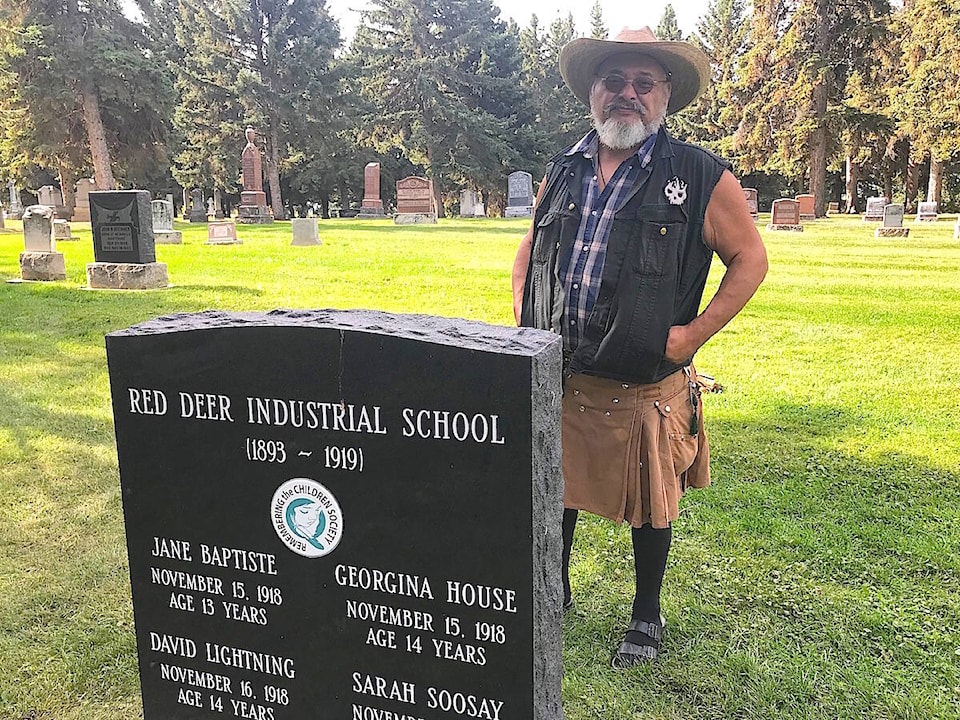Ground-penetrating radar will be used later this month to search for lost student graves on the former Red Deer Indian Industrial School site.
This decision was made by consensus from all nine First Nations which are believed to have had children at the school — and came about far quicker than Lyle Keewatin Richards had imagined.
“It happened so fast… I was pretty sure we’d be looking at next spring,” said Keewatin Richards. As a member of the Remembering the Children Society, he spent over a decade trying to find and memorialize these students’ graves.
A first meeting between members of the Society and six of the nine First Nations took place on Oct. 1. Keewatin Richards was later informed a second private meeting was held between all nine bands — including those at Maskwacis and as far as the North West Territories and Manitoba.
A consensus was rapidly reached to go ahead with the exploratory radar this month, he added.
The specialist chosen to carry out the search is Kisha Supernant, director for the Institute of Prairie and Indigenous Archaeology, and an associate professor of anthropology at the University Of Alberta.
According to the ualberta.ca, Supernant “has been increasingly engaged in using remote sensing technologies to locate and protect unmarked burials at the request of First Nations communities in Alberta and Saskatchewan.” She has been published in local and international journals on computer modeling in archaeology, and is a current Métis director on the Board of the Indigenous Heritage Circle.
Keewatin Richards, who’s of Cree heritage, remains concerned about what could be found, noting that about 19 potential burial mounds were identified in a 2008 survey of the school’s graveyard, which is now a government-owned site, across Red Deer River from Fort Normandeau.
As ground-penetrating technology is now more advanced, he fears many more graves might be discovered.
The Red Deer Indian Industrial School opened in 1893 with the goal of assimilating Indigenous youths, who were forcibly taken from their families in an attempt to equip boys with practical trades skills and girls with homemaking skills.
But the Red Deer school’s underfunded nutrition program and abysmal sanitation system contributed to a high rate of sickness and death. The Red Deer facility once had the highest fatality rate of all residential schools in Canada. Keewatin Richards also heard stories of abuse at the facility that closed in 1919.
Archival records indicate about 70 students died from total of about 350 over the school’s 26 years of operation.
Keewatin Richards was working at the Red Deer museum in 1987 when he was first approached by a Cree elder who wanted help finding his brother’s final resting place. Albert Lightning told him his brother David, 14, had died while they were both attending the Red Deer Indian Residential School.
David’s grave was located some years later — along with the graves of fellow students Jane Baptiste, Georgina House, and Sarah Soosay. Due to sickness, the four young victims of the Spanish Flu of 1918 were buried not at the school site, but in Red Deer Cemetery. A granite marker now marks these four burial sites.
Remembering the Children Society — which includes members from the United Church that historically ran the Red Deer residential school — envisions erecting another memorial at the former school site to acknowledge the rest of the students’ graves.
Keewatin Richards believes this must be done with great sensitivity, and with ceremonies organized by the nine First Nations.
The Indian Residential Schools Resolution Health Support Program has a hotline to help residential school survivors and their relatives suffering with trauma invoked by the recall of past abuse. The number is 1-866-925-4419.
